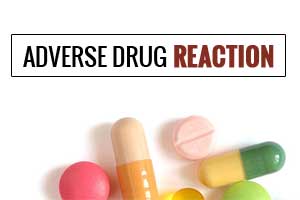- Home
- Editorial
- News
- Practice Guidelines
- Anesthesiology Guidelines
- Cancer Guidelines
- Cardiac Sciences Guidelines
- Critical Care Guidelines
- Dentistry Guidelines
- Dermatology Guidelines
- Diabetes and Endo Guidelines
- Diagnostics Guidelines
- ENT Guidelines
- Featured Practice Guidelines
- Gastroenterology Guidelines
- Geriatrics Guidelines
- Medicine Guidelines
- Nephrology Guidelines
- Neurosciences Guidelines
- Obs and Gynae Guidelines
- Ophthalmology Guidelines
- Orthopaedics Guidelines
- Paediatrics Guidelines
- Psychiatry Guidelines
- Pulmonology Guidelines
- Radiology Guidelines
- Surgery Guidelines
- Urology Guidelines
Novel triple therapy that treated massive Acetaminophen Poisoning: Case Report

Case of a massive Acetaminophen Poisoning was reported in the journal, Case Reports of Emergency Medicine. The acetaminophen poisoning was successfully treated with a novel triple therapy which included N-acetylcysteine (NAC), 4-methylpyrazole (4-MP), and hemodialysis (HD).
A 64-year-old woman with no past medical history and no prescribed medications was found unresponsive at home after ingestion of 208 tablets of Tylenol PM™ (APAP 500 mg with diphenhydramine 25 mg) approximately three hours prior to transportation to the ED. She was endotracheally intubated by prehospital staff due to decreased level of consciousness, vomitus, and agonal respiration. On arrival to the ED, vital signs included temperature of 33.9°C, heart rate of 57 bpm, blood pressure of 139/102 mmHg, respiratory rate of 19 rpm, and oxygen saturation of 99% on 100% FiO2.
The patient subsequently became hypotensive requiring five IV push-dose epinephrine doses (total 100 µg), followed by dopamine (10 µg/kg/min increased to 15 µg/kg/min), and then a norepinephrine infusion (10 µg/min). An electrocardiogram (ECG) showed sinus rhythm of 58 bpm, PR of 144 ms, QRS of 112 ms, and QTc of 659 ms. Serum chemistries measured as follows: lactate 7.6 mmol/L (0.5-1.0 mmol/L), glucose 193 mg/dL (70-100 mg/dL).
Massive APAP ingestion results in saturation of hepatic sulfation and glucuronidation which leads to excessive metabolism via hepatic CYP450 2E1 to the toxic metabolite, NAPQI. NAPQI inhibits mitochondrial respiration and contributes to cellular toxicity and metabolic acidosis. Accumulation of the organic acid, 5-oxoproline, may also contribute to the metabolic acidosis. Although typically caused by genetic glutathione deficiencies, by chronic APAP use, or with coexisting conditions such as sepsis, malnutrition, or pregnancy, 5-oxoprolinemia may be present in acute, massive APAP ingestion alone.
Massive acetaminophen (N-acetyl-p-aminophenol; APAP) ingestion is characterized by a rapid onset of mitochondrial dysfunction, including metabolic acidosis, lactemia, and altered mental status without hepatotoxicity which may not respond to the standard doses of N-acetylcysteine (NAC).
"A novel “triple therapy” with NAC, 4-MP, and HD may be applicable and have physiologic merit in the case of a patient suffering from massive APAP poisoning. Further study is warranted." concluded the authors.
For reference, follow the link: https://doi.org/10.1155/2019/9301432

Disclaimer: This site is primarily intended for healthcare professionals. Any content/information on this website does not replace the advice of medical and/or health professionals and should not be construed as medical/diagnostic advice/endorsement or prescription. Use of this site is subject to our terms of use, privacy policy, advertisement policy. © 2020 Minerva Medical Treatment Pvt Ltd